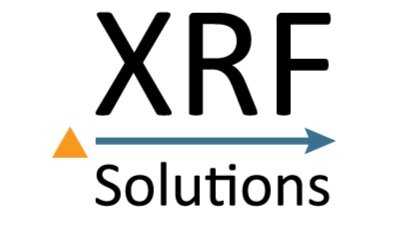XRF Process
Portable X-Ray Fluorescence analyses are a quick and non-destructive process, requiring minimal sample preparation. Core analyses are conducted at high resolution directly on the surface of the core. Cuttings are screened with a magnet to remove metal shavings, then placed in a sample cup and analysed as a bulk sample. It takes approximately one minute for a single analysis allowing for hundreds of data points to be collected in a single day. XRF data are calibrated to known standards to achieve precise and accurate elemental measurements.
In order to develop mineralogy and reservoir properties from the elemental data, we build formation and area specific models. Generally, we will conduct XRF analyses at high resolution on 2-3 cores from the area of interest that have lab or wire line data for the properties we want to model. Elemental data is first processed using the principles of mineralogical phase theory to construct normative mineral algorithms. Mineralogy and trace elements are then use in conjunction with fabric dependent coefficients to derive various reservoir properties of interest. XRF derived results are compared against reference data until a strong correlation is achieved.
Once a model has been developed from core for a formation and area, there are several applications:
XRF derived mineralogy and reservoir properties can be acquired on additional core to infill existing data or develop new data sets where little to no existing data are available.
XRF derived mineralogy and reservoir properties can be acquired from drill cuttings to log horizontal wells.
Data Collection Process:
Drill cuttings or core can be either sent to our offices or a team of analysts can go to where the samples are stored.
Core or cuttings are analyzed non-destructively using Bruker Tracer 5G instruments. Typically sample intervals are 10cm for core, and 5 or 10m for cuttings.
Raw data undergoes quality control checks and insufficient data points are re-analyzed.
Modeling Process:
Raw elemental data from core and drill cuttings are calibrated against known standards.
Mineralogical phase theory algorithms convert elemental data into mineralogy.
Reservoir property algorithms are developed and applied to the mineralogy and trace element data. Models have been developed for PSD, grain size, porosity, permeability, mechanical properties, TOC, fluid saturation, and S content in oil.
Lab and/or wireline data are compared against XRF derived reservoir properties to confirm the model.
The formation and area model is complete.
